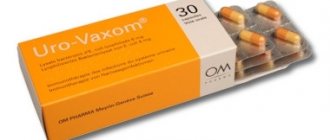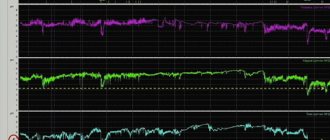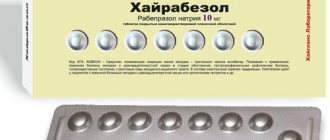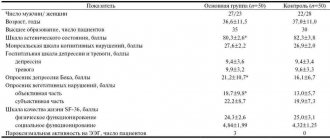Heptor 400 mg 20 pcs. enteric-coated tablets
pharmachologic effect
Hepatoprotective agent.
Composition and release form Heptor 400 mg 20 pcs. enteric-coated tablets
Tablets - 1 tablet:
- Active substance: Ademetionine tosylate disulfate in terms of ademetionine ion - 400 mg;
- Excipients to obtain a tablet weighing 0.95 g (without shell): polyplasdon X El-10 (crospovidone) - 19 mg, microcrystalline cellulose - 53 mg, mannitol (mannitol) - 53 mg, magnesium stearate - 15 mg;
- There is a sufficient amount of excipients to obtain a tablet with a shell weighing 1.045 g: yellow acrylic - [methacrylic acid and ethyl acrylate copolymer (1:1), talc, titanium dioxide, colloidal silicon dioxide, triethyl citrate, sodium bicarbonate, sodium lauryl sulfate, yellow iron oxide , quinoline yellow aluminum varnish], hydroxypropyl methylcellulose, plasdon ES-630 (copovidone), polyethylene glycol 6000.
10 tablets per blister pack.
20, 40 or 50 tablets per polymer jar.
Each jar contains either 1 or 2 blister packs along with instructions for use in a pack.
Description of the dosage form
Enteric-coated tablets are yellow, oblong, biconvex.
Directions for use and doses
During the period of maintenance therapy, a daily dose of 800-1600 mg (2-4 tablets) is recommended. The duration of maintenance therapy is on average 2-4 weeks. The tablets should be swallowed whole without chewing. To improve the therapeutic effect, it is recommended to take the tablets in the first half of the day between meals.
Pharmacodynamics
Heptor belongs to the group of hepatoprotectors with antidepressant activity. It has choleretic and cholekinetic effects. It has detoxifying, regenerating, antioxidant, antifibrosing and neuroprotective effects.
Replenishes ademetionine deficiency and stimulates its production in the body, primarily in the liver and brain. Participates in biological transmethylation reactions (methyl group donor) - the S-adenosyl-L-methionine molecule (ademetionine) donates a methyl group in methylation reactions of phospholipids of cell membranes, proteins, hormones, neurotransmitters, etc.; transsulfation - a precursor of cysteine, taurine, glutathione (provides a redox mechanism of cellular detoxification), coenzyme A. Increases the content of glutamine in the liver, cysteine and taurine in the plasma; reduces the content of methionine in the blood serum, normalizing metabolic reactions in the liver. After decarboxylation, it participates in aminopropylation processes as a precursor of polyamines - putrescine (stimulator of cell regeneration and hepatocyte proliferation), spermidine and spermine, which are part of the ribosome structure. It has a choleretic effect due to increased mobility and polarization of hepatocyte membranes due to stimulation and synthesis of phosphatidylcholine in them. This improves the function of bile acid transport systems associated with hepatocyte membranes and promotes the passage of bile acids into the biliary system. Effective for intralobular cholestasis (impaired synthesis and flow of bile). Promotes detoxification of bile acids, increases the content of conjugated and sulfated bile acids in hepatocytes. Conjugation with taurine increases the solubility of bile acids and their removal from hepatocytes. The process of sulfation of bile acids promotes their elimination by the kidneys, facilitates their passage through the hepatocyte membrane and excretion with bile. In addition, sulfated bile acids protect liver cell membranes from the toxic effects of non-sulfated bile acids, which are present in high concentrations in hepatocytes during intrahepatic cholestasis. In patients with diffuse liver diseases (cirrhosis, hepatitis) with intrahepatic cholestasis syndrome, it reduces the severity of skin itching and changes in biochemical parameters, incl. concentrations of direct and total bilirubin, activity of alkaline phosphatase, g-glutamyl transpeptidase, aminotransferases. The choleretic and hepatoprotective effect lasts up to 3 months after cessation of treatment. Shown to be effective in hepatopathy caused by hepatotoxic drugs. Prescribing ademetionine to patients with opioid addiction accompanied by liver damage leads to regression of clinical manifestations of withdrawal, improvement of the functional state of the liver and microsomal oxidation processes. Antidepressant activity appears gradually, starting from the end of 1 week of treatment and stabilizes within 2 weeks of treatment. Effective for recurrent endogenous and neurotic depressions resistant to amitriptyline. Has the ability to interrupt relapses of depression. Prescription for osteoarthritis reduces the severity of pain, increases the synthesis of proteoglycans and leads to partial regeneration of cartilage tissue.
Pharmacokinetics
Bioavailability when taken orally - 5%. With a single oral dose of 400 mg, the maximum plasma concentration (Cmax) is 0.7 mg/l. Time to reach maximum concentration (TCmax) - 2-6 hours. Binding to plasma proteins is insignificant, penetrates the blood-brain barrier. When taken, there is a significant increase in the concentration of ademetionine in the cerebrospinal fluid. Metabolized in the liver. Half-life (T1/2) - 1.5 hours.
Indications for use Heptor 400 mg 20 pcs. enteric-coated tablets
- chronic non-calculous cholecystitis;
- cholangitis;
- intrahepatic cholestasis;
- hepatitis of various origins: viral, toxic, incl. alcoholic and medicinal origin (antibiotics, antitumor, antituberculosis and antiviral drugs, tricyclic antidepressants, oral contraceptives);
- fatty liver;
- cirrhosis of the liver;
- encephalopathy, incl. associated with liver failure (alcohol, etc.);
- depression (including secondary);
- withdrawal syndrome (alcohol, etc.).
Contraindications
Hypersensitivity.
Children under 18 years of age.
Pregnancy I-II trimester, lactation period.
Application of Heptor 400 mg 20 pcs. Enteric-coated tablets during pregnancy and breastfeeding
Taking the drug is contraindicated in the I-II trimester of pregnancy and during lactation.
special instructions
Given the tonic effect of the drug, it is not recommended to take it before bedtime. Oral use of the drug in patients with liver cirrhosis associated with hyperazotemia should be carried out under medical supervision with monitoring of nitrogen levels. The tablets of the drug are coated with a special coating that dissolves only in the intestines, due to which ademetionine is released in the duodenum. In patients with bipolar affective disorder, taking ademetionine can induce an inversion of affect (the development of hypomania or mania).
Impact on the ability to drive vehicles and operate machinery
When used in this dosage form, the drug does not affect the ability to drive a car or operate machinery.
Overdose
There were no clinical cases of overdose.
Side effects Heptor 400 mg 20 pcs. enteric-coated tablets
For this dosage form:
From the nervous system: headache, insomnia.
From the digestive system: abdominal pain, diarrhea, dry mouth, dyspepsia, flatulence, nausea.
Drug interactions
No interactions with other drugs were observed.
HEPTOR
Pharmacodynamics
Heptor belongs to the group of hepatoprotectors with antidepressant activity.
It has choleretic and cholekinetic effects. It has detoxifying, regenerating, antioxidant, antifibrosing and neuroprotective effects. Replenishes ademetionine deficiency and stimulates its production in the body, primarily in the liver and brain. Participates in biological transmethylation reactions (methyl group donor) - the S-adenosyl-L-methionine molecule (ademetionine) donates a methyl group in methylation reactions of phospholipids of cell membranes, proteins, hormones, neurotransmitters, etc.; transsulfation - a precursor of cysteine, taurine, glutathione (provides a redox mechanism of cellular detoxification), coenzyme A. Increases the content of glutamine in the liver, cysteine and taurine in the plasma; reduces the content of methionine in the blood serum, normalizing metabolic reactions in the liver. After decarboxylation, it participates in aminopropylation processes as a precursor of polyamines - putrescine (stimulator of cell regeneration and hepatocyte proliferation), spermidine and spermine, which are part of the ribosome structure. It has a choleretic effect due to increased mobility and polarization of hepatocyte membranes due to stimulation and synthesis of phosphatidylcholine in them. This improves the function of bile acid transport systems associated with hepatocyte membranes and promotes the passage of bile acids into the biliary system. Effective for intralobular cholestasis (impaired synthesis and flow of bile). Promotes detoxification of bile acids, increases the content of conjugated and sulfated bile acids in hepatocytes. Conjugation with taurine increases the solubility of bile acids and their removal from hepatocytes. The process of sulfation of bile acids promotes their elimination by the kidneys, facilitates their passage through the hepatocyte membrane and excretion with bile. In addition, sulfated bile acids protect liver cell membranes from the toxic effects of non-sulfated bile acids, which are present in high concentrations in hepatocytes during intrahepatic cholestasis. In patients with diffuse liver diseases (cirrhosis, hepatitis) with intrahepatic cholestasis syndrome, it reduces the severity of skin itching and changes in biochemical parameters, incl. concentrations of direct and total bilirubin, activity of alkaline phosphatase, g-glutamyl transpeptidase, aminotransferases. The choleretic and hepatoprotective effect lasts up to 3 months after cessation of treatment. Shown to be effective in hepatopathy caused by hepatotoxic drugs. Prescribing ademetionine to patients with opioid addiction accompanied by liver damage leads to regression of clinical manifestations of withdrawal, improvement of the functional state of the liver and microsomal oxidation processes. Antidepressant activity appears gradually, starting from the end of 1 week of treatment and stabilizes within 2 weeks of treatment. Effective for recurrent endogenous and neurotic depressions resistant to amitriptyline. Has the ability to interrupt relapses of depression. Prescription for osteoarthritis reduces the severity of pain, increases the synthesis of proteoglycans and leads to partial regeneration of cartilage tissue.
Heptor lyophile solution 400 mg N5 (Veropharm)
Heptor belongs to the group of hepatoprotectors with antidepressant activity. It has choleretic and cholekinetic effects. It has detoxifying, regenerating, antioxidant, antifibrosing and neuroprotective effects. Replenishes ademetionine deficiency and stimulates its production in the body, primarily in the liver and brain. Participates in biological transmethylation reactions (methyl group donor) - the S-adenosyl-L-methionine molecule (ademetionine) donates a methyl group in methylation reactions of phospholipids of cell membranes, proteins, hormones, neurotransmitters, etc.; transsulfation - a precursor of cysteine, taurine, glutathione (provides a redox mechanism of cellular detoxification), coenzyme A. Increases the content of glutamine in the liver, cysteine and taurine in the plasma; reduces the content of methionine in the blood serum, normalizing metabolic reactions in the liver. After decarboxylation, it participates in the processes of aminopropylation as a precursor of polyamines - putrescine (stimulator of cell regeneration and proliferation of hepatocytes), spermidine and spermine, which are part of the ribosome structure. It has a choleretic effect due to increased mobility and polarization of hepatocyte membranes due to stimulation of the synthesis of phosphatidylcholine in them. This improves the function of bile acid transport systems associated with hepatocyte membranes and promotes the passage of bile acids into the biliary system. Effective for intralobular cholestasis (impaired synthesis and flow of bile). Promotes detoxification of bile acids, increases the content of conjugated and sulfated bile acids in hepatocytes. Conjugation with taurine increases the solubility of bile acids and their removal from hepatocytes. The process of sulfation of bile acids promotes their elimination by the kidneys, facilitates their passage through the hepatocyte membrane and excretion with bile. In addition, sulfated bile acids protect liver cell membranes from the toxic effects of non-sulfated bile acids, which are present in high concentrations in hepatocytes during intrahepatic cholestasis. In patients with diffuse liver diseases (cirrhosis, hepatitis) with intrahepatic cholestasis syndrome, it reduces the severity of skin itching and changes in biochemical parameters, incl. concentration of direct bilirubin, activity of alkaline phosphatase, g-glutamyl transpeptidase, aminotransferases. The choleretic and hepatoprotective effect lasts up to 3 months after cessation of treatment. Shown to be effective in hepatopathy caused by hepatotoxic drugs. Prescribing ademetionine to patients with opioid addiction accompanied by liver damage leads to regression of clinical manifestations of withdrawal, improvement of the functional state of the liver and microsomal oxidation processes. Antidepressant activity appears gradually, starting from the end of 1 week of treatment and stabilizes within 2 weeks of treatment. Effective for recurrent endogenous and neurotic depressions resistant to amitriptyline. Has the ability to interrupt relapses of depression. Prescription for osteoarthritis reduces the severity of pain, increases the synthesis of proteoglycans and leads to partial regeneration of cartilage tissue.




